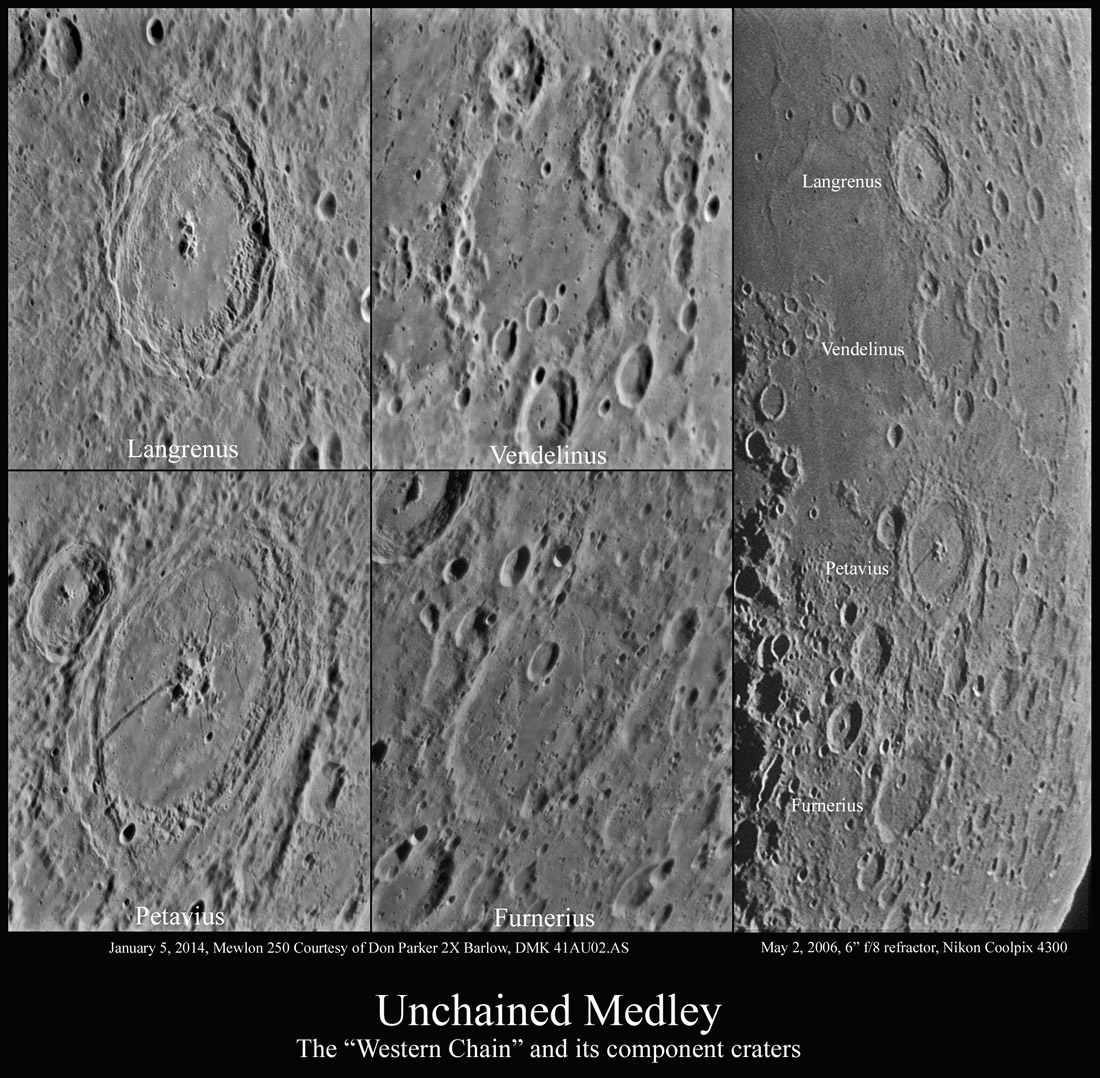October 28, 2024
The Western Chain
Originally published June 1, 2014

image by Howard Eskildsen, Florida
The "Western Chain" arcs across the southeastern limb of the Moon and is a relic of times past. It was once used as an argument in favor of the volcanic origin of craters as if the component craters were extruded from a long, common fault. At that time this was also considered the western edge of the moon, but the conventions changed with the Apollo program and east and west were reversed to their current orientation. As for the idea of a fracture in the crust of the moon that led to the volcanic formation of the craters, work by Dr Ralph Baldwin proved the craters to be of impact origin, not volcanic action, though his work was unappreciated by amateurs for a decade or more after its publication.
Close examination of the craters shows that they are of greatly differing ages. Langrenus looks fresh with distinct terraces and prominent central peaks, though its rays have all but faded from view. Petavius has similarly prominent central peaks, but its terraces have softened from weathering, suggesting greater age then Langrenus. Also its floor shows evidence of uplift with cracks or rilles belying modification from intrusive magma below the surface. Both Vendelinus and Furnerius show extensive erosion, suggesting that they are by far the oldest craters of the "chain." They also have been peppered with subsequent craters, and their floors have been so deeply filled that the central peaks have vanished in the case of Vendelinus, and are barely distinguishable in Furnerius. So the "Western Chain" now resides on the eastern side of the moon due to change in convention, and the craters are not linked by a common deep crustal fault, but are a collection of random impacts over a very long period of time. To me it matters not which hypothesis of the origin of craters eventually proved correct, but rather that it was scientific observation that led to the definitive and proper conclusion.
Howard Eskildsen
Related Links
21st Century Atlas charts 3 & 4.
Yesterday's LPOD: M & M
Tomorrow's LPOD: Alexander the not So Great
COMMENTS?
Register, Log in, and join in the comments.



